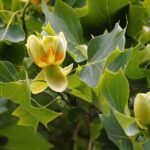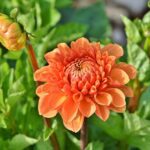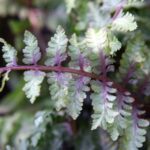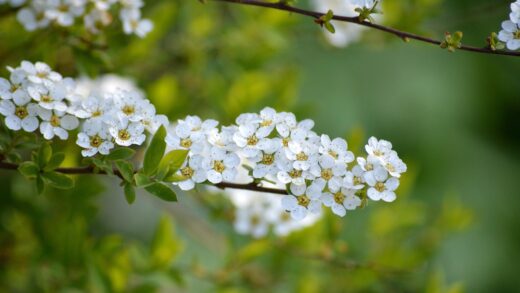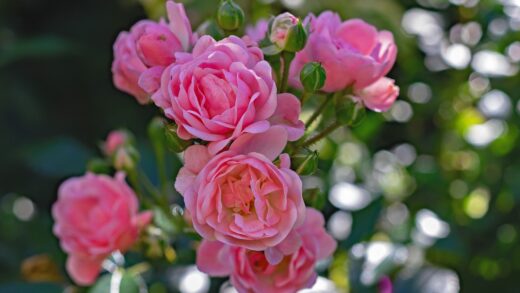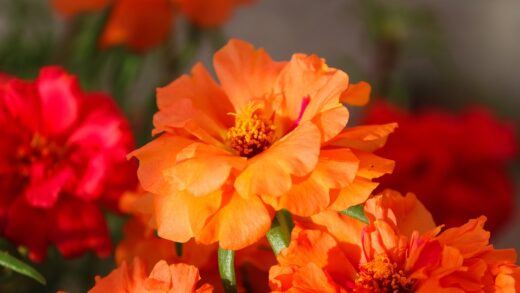One of the most compelling attributes of rose campion for any gardener is its remarkable resilience and general freedom from serious pest and disease issues. The very characteristics that make it visually striking—the dense, woolly, silver-grey foliage—also serve as a formidable natural defense mechanism. This pubescence deters many common garden herbivores, such as deer and rabbits, and makes the leaves less palatable to a wide range of insect pests. However, while it is a robust and largely trouble-free plant, it is not entirely immune to problems. Understanding the few potential issues that can arise, which are almost invariably linked to environmental conditions, is key to maintaining its health and vitality.
The primary health challenges for rose campion are not typically caused by insects or pathogenic attack, but rather by cultural practices that are at odds with its fundamental needs. The most significant threat, by a considerable margin, is root and crown rot. These are fungal diseases that thrive in poorly drained, waterlogged soils. As a species adapted to dry, gritty conditions, rose campion has virtually no tolerance for having its roots sit in constant moisture. Therefore, the most critical aspect of disease prevention is not a spray or a treatment, but rather the initial act of providing excellent drainage at the planting site.
When it comes to pests, rose campion is rarely a primary target. Most chewing and sucking insects are deterred by the hairy leaf surfaces. This natural resistance means that the use of insecticides is almost never warranted. The occasional pest that might be found, such as aphids on new, tender growth, can usually be managed with simple, non-chemical methods. The plant’s ability to fend for itself against common garden marauders makes it an excellent choice for low-intervention or organic gardening practices.
Ultimately, a proactive approach centered on providing the right growing environment is the most effective strategy for keeping rose campion healthy. By ensuring full sun, superb drainage, and good air circulation, the gardener creates conditions in which the plant can thrive and its natural defenses are at their strongest. The few problems that may occur are often indicators that one of these core cultural requirements is not being met. Recognizing these signals and correcting the underlying environmental issue is far more effective than reacting to symptoms with chemical treatments.
Fungal diseases and prevention
The most prevalent and serious diseases affecting rose campion are fungal in nature, and they are almost exclusively a result of excess moisture. Crown rot and root rot are the primary culprits, caused by various soil-borne pathogens like Phytophthora or Rhizoctonia. These fungi flourish in anaerobic (low-oxygen) conditions created by waterlogged soil. When the soil remains saturated for extended periods, the plant’s roots are unable to respire, become stressed, and are easily invaded by these opportunistic pathogens. The infection leads to the decay of the root system and the base of the plant, or crown.
More articles on this topic
The symptoms of crown and root rot can be deceptive. An affected plant will often wilt, and its lower leaves may turn yellow. This can be easily mistaken for a sign of thirst, tempting the gardener to apply more water, which only exacerbates the problem. The key diagnostic clue is that the plant is wilting despite the soil being moist or wet. Upon closer inspection, the base of the stems at the soil line will appear dark, mushy, and decayed. At this stage, the disease is advanced and the plant is almost certainly beyond saving.
Prevention is the only effective cure for these rot diseases. It begins before the plant even goes into the ground. Selecting a site with naturally good drainage is paramount. For gardens with heavy clay soil, amending the soil generously with horticultural grit, coarse sand, and organic compost is not optional but essential to improve its porosity. Alternatively, planting rose campion in raised beds or on sloped ground physically removes it from areas where water is likely to pool. Ensuring the plant’s crown is not buried below the soil line during planting is another critical preventative step.
Good watering practices are also a cornerstone of prevention. Established rose campion should be watered deeply but infrequently, allowing the soil to dry out thoroughly between irrigations. Overhead watering should be avoided, as it can keep the crown and the dense basal foliage wet for prolonged periods, creating a humid microclimate that is conducive to fungal growth. By managing soil moisture carefully, the gardener denies the fungal pathogens the conditions they need to proliferate, which is the most effective disease management strategy available.
Common insect pests
Rose campion’s felted leaves and stems make it highly unappealing to most insect pests, and significant infestations are rare. The plant is not a preferred food source for the majority of common garden insects. However, under certain conditions, a few pests may make an appearance, though they seldom cause extensive damage. The most likely culprits are aphids, which are small, sap-sucking insects that tend to congregate on the most tender parts of the plant, such as new shoots or developing flower buds.
More articles on this topic
An aphid infestation on rose campion is usually minor and can often be controlled without resorting to chemicals. A strong jet of water from a garden hose is frequently sufficient to dislodge the insects from the plant. This should be done in the morning on a sunny day to allow the foliage to dry quickly. For a more persistent problem, an application of insecticidal soap can be effective. It is important to follow the product’s instructions and ensure thorough coverage of the affected areas. However, this is generally a last resort, as aphids on rose campion rarely threaten the overall health of the plant.
Slugs and snails may occasionally cause some damage, particularly to young seedlings whose leaves are not yet as densely woolly as those of mature plants. These molluscs feed at night, creating irregular holes in the leaves. In areas where slugs and snails are a known problem, preventative measures can be taken. Surrounding the plants with a barrier of sharp grit, crushed eggshells, or diatomaceous earth can deter them. Slug baits can also be used, with iron phosphate-based products being a safer option for wildlife and pets compared to those containing metaldehyde.
Spider mites are another potential pest, though they are uncommon on rose campion unless the plant is grown in very hot, dry, and dusty conditions with poor air circulation, such as against a south-facing wall. These tiny arachnids cause a stippling or bronzing of the leaves as they feed on the plant’s juices. Ensuring adequate spacing for air movement and keeping the plants well-hydrated during extreme drought can help prevent spider mites from becoming established. If they do appear, a strong spray of water or insecticidal soap can help to manage them.
Vertebrate pests
One of the most celebrated characteristics of rose campion is its excellent resistance to browsing by vertebrate pests, most notably deer and rabbits. The same fuzzy texture of the foliage that deters many insects also makes the plant unpalatable to these common garden herbivores. While no plant can be guaranteed as completely “deer-proof” or “rabbit-proof,” as feeding habits can vary depending on location and food availability, rose campion is consistently ranked as a highly resistant plant. This makes it an outstanding choice for gardens that are prone to damage from these animals.
The resistance of rose campion allows it to be used confidently in unfenced borders and cottage gardens where other more palatable plants like hostas or tulips would be quickly devoured. Gardeners can plant it in drifts or as a specimen without the need for protective netting, sprays, or other deterrents. This significantly reduces the maintenance effort and cost associated with protecting the garden from these four-legged visitors, allowing for a more relaxed and naturalistic planting style.
While larger herbivores tend to avoid it, smaller burrowing animals like voles or gophers could potentially cause damage. These animals do not typically eat the plant itself, but their tunnelling activities can disturb or damage the root system, causing the plant to wilt or die. This is not a problem specific to rose campion but is a risk for any plant in an area with a high population of these rodents. If tunnelling is observed near the plants, trapping or other control methods for the specific rodent may be necessary.
In summary, the threat from vertebrate pests to rose campion is minimal. Its natural defenses make it a reliable and robust performer in a wide range of garden settings, including those with significant deer or rabbit pressure. This high degree of resistance is a major horticultural asset, contributing significantly to the plant’s popularity and utility in landscape design, providing vibrant color and texture without the constant worry of animal browsing.
Recognizing and diagnosing problems
Effectively managing the health of rose campion relies on the ability to accurately diagnose the root cause of any observed problems. Since the plant is generally robust, when issues do arise, they are often a direct reflection of a cultural or environmental stressor. The first step in diagnosis is careful observation of the plant’s symptoms and its surrounding conditions. For instance, if leaves are yellowing, it is crucial to assess the soil moisture. Yellowing leaves in wet soil point towards overwatering and potential root rot, whereas yellowing leaves in very dry, poor soil might, in rare cases, suggest a nutrient deficiency.
Wilting is another common symptom that requires careful interpretation. As previously mentioned, it is vital to distinguish between temporary heat stress, which is harmless, and wilting caused by either drought or root rot. Checking the soil moisture is the definitive diagnostic test. If the plant is wilting and the soil is dry several inches down, the problem is a lack of water. Conversely, if the plant is wilting and the soil is damp, the problem is an excess of water causing root failure. This simple check prevents the catastrophic error of watering a drowning plant.
Physical damage, such as holes in the leaves, should prompt an inspection for pests. The irregular holes with smooth edges characteristic of slug or snail damage are different from the stippling caused by spider mites or the presence of aphids clustered on new growth. Looking for the pests themselves, or their tell-tale signs like slime trails, is the best way to confirm the culprit. However, given the plant’s pest resistance, such damage is often minor and may not warrant any intervention.
By adopting a holistic approach to diagnosis, the gardener can move beyond simply treating symptoms and instead address the underlying cause of the problem. Is the plant in a location with poor drainage? Is it being watered too frequently? Is there inadequate air circulation? Answering these questions will often reveal a cultural issue that, once corrected, will resolve the problem and prevent its recurrence. This method of integrated pest and disease management, focused on creating a healthy growing environment, is the most sustainable and effective way to care for rose campion.








